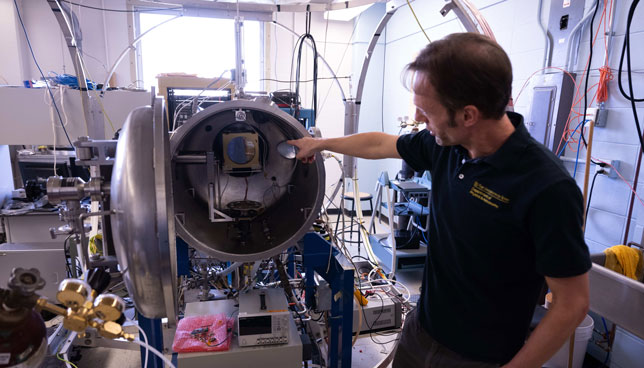TRACERS: The College of Iowa Leads NASA-Funded House Climate Analysis with Twin Satellites
A Q&A with Jasper Halekas
On July 23, 2025, a NASA-funded mission led by the College of Iowa noticed the profitable launch of its twin satellites from Vandenberg House Power Base house launch advanced 4E, atop a SpaceX Falcon 9 rocket. The TRACERS satellites (Tandem Reconnection and Cusp Electrodynamics Reconnaissance Satellites) are carrying on-board devices in a solar-synchronous low Earth orbit. From there, the duo will spend a 12 months taking measurements and returning knowledge that may assist researchers as they research the more and more essential area of house climate — specifically, the interplay of the photo voltaic wind with the Earth’s magnetosphere (generally regarded as Earth’s “protecting bubble”).
CT spoke with Jasper Halekas, a professor within the Physics and Astronomy division on the College of Iowa and an instrument lead for the mission, in regards to the information TRACERS will deliver to the science of house climate, and importantly, how college students and the College of Iowa neighborhood profit from the R1’s emphasis on bringing analysis collaborations and teachers collectively.

Mary Grush: Why is the TRACERS mission necessary to the research of house climate?
Jasper Halekas: TRACERS is a mission involved with understanding how the vitality from the solar is coupled to the terrestrial surroundings. We all know that the solar is placing out all types of vitality — within the type of daylight in fact, but in addition within the type of what we name the photo voltaic wind, a stream of scorching ionized fuel coming from the solar at about 1,000,000 miles an hour.
When there are house climate occasions — photo voltaic storms and issues like that — a few of that vitality can come into the terrestrial surroundings and have an effect on our technological techniques which are in orbit or typically even on the bottom.
So, TRACERS is worried with understanding how environment friendly that switch of vitality is; how a lot of that vitality from the solar can get into the Earth’s protecting magnetic bubble, if you’ll, and have an effect on our technological techniques and consequently our society within the terrestrial surroundings.
Grush: Wanting on the title of the mission for a minute, may you clarify a bit of bit about magnetic reconnection? And associated to that, what’s the function of what’s referred to as a cusp?
Halekas: Magnetic reconnection is a course of that happens in an area plasma, that principally permits a crack to type within the Earth’s magnetic area.
As you realize, the Earth has a giant world magnetic area produced in its core, and that magnetic area types a type of protecting bubble across the terrestrial surroundings.
However that bubble might be cracked, letting vitality in from the solar. Magnetic reconnection is a course of that permits that to occur. It’s a course of the place the magnetic area from the solar interacts with the magnetic area from the Earth in such a approach as to open up Earth’s magnetic area, letting a number of the photo voltaic wind particles and vitality come into the terrestrial surroundings.
One place that we will observe that’s the polar cusp of the Earth’s magnetosphere. The cusp is principally a giant funnel that connects Earth’s environment and ionosphere out to the entrance of the Earth’s magnetic bubble. And so, it permits us to see, in a way, what’s taking place out on the very entrance of the Earth’s magnetic protect — as a result of the whole lot form of funnels down the cusp to us, and we will now observe it with TRACERS.



